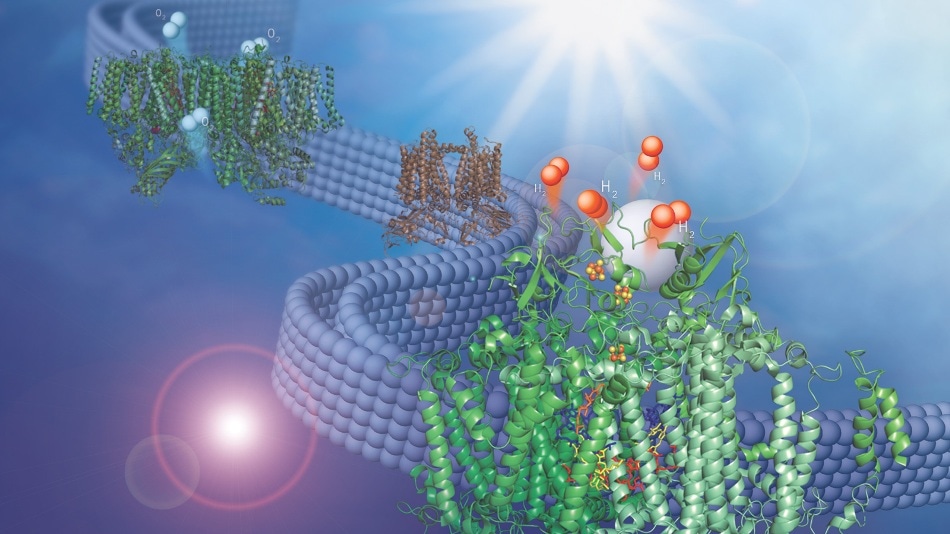Jan 11 2019
A chemical reaction pathway key to plant biology has been adapted to become the backbone of a new process that changes water into hydrogen fuel with the aid of energy from the sun.
 This image shows two membrane-bound protein complexes that work together with a synthetic catalyst to produce hydrogen from water. (Image by Olivia Johnson and Lisa Utschig.)
This image shows two membrane-bound protein complexes that work together with a synthetic catalyst to produce hydrogen from water. (Image by Olivia Johnson and Lisa Utschig.)
In a recent research from the U.S. Department of Energy’s (DOE) Argonne National Laboratory, researchers have integrated two membrane-bound protein complexes to perform a full conversion of water molecules to oxygen and hydrogen.
The research builds on a previous study that explored one of these protein complexes, known as Photosystem I, a membrane protein that can use energy from light to feed electrons to an inorganic catalyst that produces hydrogen. This part of the reaction, however, signifies only half of the whole process required for hydrogen generation.
By employing a second protein complex that uses energy from light to split water and draw electrons from it, called Photosystem II, Argonne chemist Lisa Utschig and her colleagues were able to draw electrons from water and feed them to Photosystem I.
In a previous experiment, the scientists supplied Photosystem I with electrons from a sacrificial electron donor. “The trick was how to get two electrons to the catalyst in fast succession,” Utschig said.
The two protein complexes are embedded in thylakoid membranes, similar to those found within the oxygen-creating chloroplasts in higher plants.
The membrane, which we have taken directly from nature, is essential for pairing the two photosystems. It structurally supports both of them simultaneously and provides a direct pathway for inter-protein electron transfer, but doesn’t impede catalyst binding to Photosystem I.
Lisa Utschig, Chemist, Argonne National Library.
According to Utschig, the Z-scheme—which is the technical term for the light-triggered electron transport chain of natural photosynthesis that takes place in the thylakoid membrane—and the synthetic catalyst come together quite gracefully. “The beauty of this design is in its simplicity—you can self-assemble the catalyst with the natural membrane to do the chemistry you want,” she said.
One extra improvement involved the swap of cobalt or nickel-containing catalysts for the costly platinum catalyst that had been used in the previous study. The new nickel or cobalt catalysts could greatly reduce potential costs.
The subsequent step for the study, according to Utschig, involves integrating the membrane-bound Z-scheme into a living system.
Once we have an in vivo system—one in which the process is happening in a living organism—we will really be able to see the rubber hitting the road in terms of hydrogen production.
Lisa Utschig, Chemist, Argonne National Library.
A paper based on the study titled “Z-scheme solar water splitting via self-assembly of photosystem I-catalyst hybrids in thylakoid membranes” was published in the October 29 online edition of Chemical Science. Other Argonne authors of the paper included Sarah Soltau, Karen Mulfort, Jens Niklas, and Oleg Poluektov.
The study was sponsored by the DOE Office of Science, Basic Energy Sciences Program.